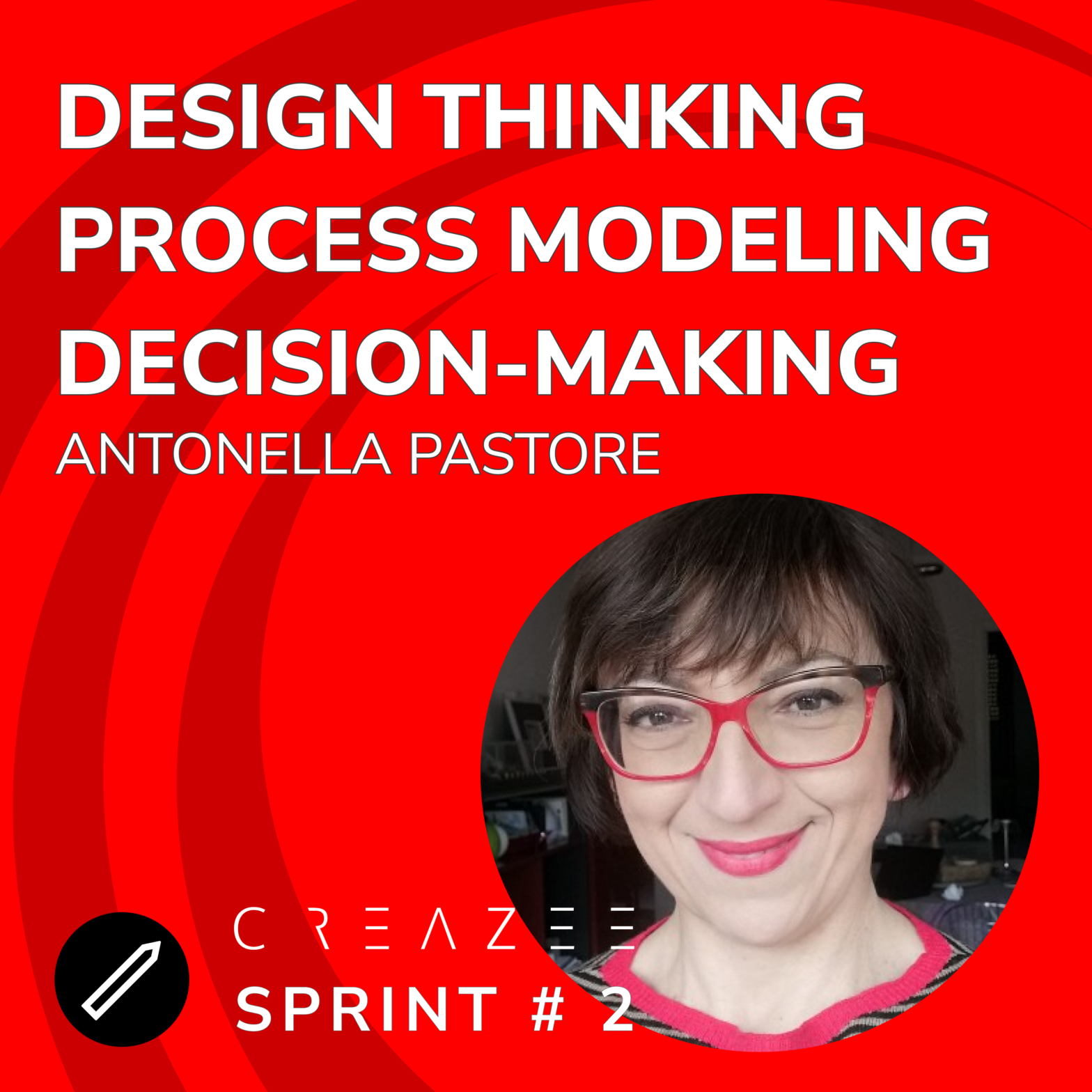
Massimo Curatella (CREAZEE Sprint) and Antonella Pastore (Information Architect, Human-Centred Designer) discuss the design of complex processes with multiple stakeholders in the world of no-profits.
CREAZEE: https://creazee.com
Youtube Channel: https://youtube.com/@creazee_com
HOSTS
Massimo Curatella: https://curatella.com
Antonella Pastore: https://www.linkedin.com/in/antonellapastore/
SUMMARY
The CREAZEE Sprint 2 session featured a conversation between Massimo Curatella and Antonella Pastore, an expert in human-centered design and information architecture. The discussion explored the power of design thinking, process modeling, decision-making, and collaboration in problem-solving. They emphasized the importance of understanding human needs to inform design objectives and technology use. The role of visual scribing or annotation was discussed, facilitating emergent ideas in conversations, but they cautioned that it has its pros and cons. A key part of their conversation was about setting a guide or agenda in qualitative interviews to cover desired topics without losing the potential for emerging ideas. They explored the value of continuous dialogue and iterative conversation, highlighting the creation of new knowledge through connections and synthesis. Antonella shared her approach to work, emphasizing collaboration and building on previous discussions, rather than duplicating work. The concept of co-creating a process map was addressed, explaining how it makes the system and its potential inefficiencies visible to everyone involved. The dialogue acknowledged the evolving nature of complex systems, and the idea of finding leverage points in a system was connected to Donella Meadows’ work. Finally, the conversation touched upon managing information overload, and Antonella’s strategy to apply effective filters to handle a large quantity of information.
VISUAL NOTES
Index
- Introduction and Conversation Purpose with Antonella Pastore
- Antonella’s Role as a Human-Centered Designer and research in the tech field
- The Relationship Between Information Architecture and Human-Centered Design
- Journey to Human-centered Design: Antonella’s transition from information architecture to human-centered design
- Visual Thinking vs Textual Approach
- The Role of Visualization: Discussing pros and cons of visual scribing
- The Interview Process: Generative interviews, listening and focusing on emerging ideas
- The Role of Trust in Open Conversations
- Continuous Conversation and Iterative Learning
- Compounding Knowledge: Using building blocks to create networked thinking and knowledge
- The Potential for Collaboration through Shared Notes and Conversations
- Enjoyment in Collaboration: Discussing the pleasure of collaborative exploration.
- Collaborative Review: Seeing Through Each Other’s Eyes
- Differences in Synthesis and Individual Connections in Process Modeling
- Collaboration vs Duplication: Building Upon Established Synthesis
- Importance of Personal Reflection and Contribution in Synthesis
- Emphasizing Connections Rather Than Redoing Work From Scratch
- Connecting with Marco Genovesi: Unforeseen Value in Collaboration
- The “Surprise” Factor in Research and Its Value
- The Challenge and Implications of Identifying Inefficiencies in Business Processes
- Prioritizing Job Satisfaction and Meaningfulness Over Efficiency
- The Power of Co-creating a Process Map and its Role in Visual Facilitation
- Implementing Systems Thinking in Work and Its Influence on Discovery Work
- The Impact of Systems Mapping on Work Approach and Life
- Systems Mapping as an Anxiety Remover
- Visual Diagrams as Anxiety Stoppers and Their Role in Visual Scribing
- Dealing with Information Overload and Maintaining a High Threshold
- Developing Effective Information Filters to Cope with Overload
- Overcoming FOMO by Establishing Strong Information Filters
- Handling Fear of Missing Out (FOMO) in Social Media
- The Design Thinking Paradigm and Double Diamond Method in Digital Product Design
- Challenges of Converging in the Design Process
- Considering Harmonization over Alignment in Organizational Design
- Introduction to the term Orchestration
- Benefits of Facilitation in Human-Centered Design
- The Role of Metaphors in Decision-Making
- Revisiting Architecture and Identifying Patterns in Design
- The Importance of Pattern Recognition in Research
- Reflections on the Podcast and Looking at Work through Different Eyes
- Closing Remarks and Future Plans
Subscribe and learn more at: https://creazee.com/
